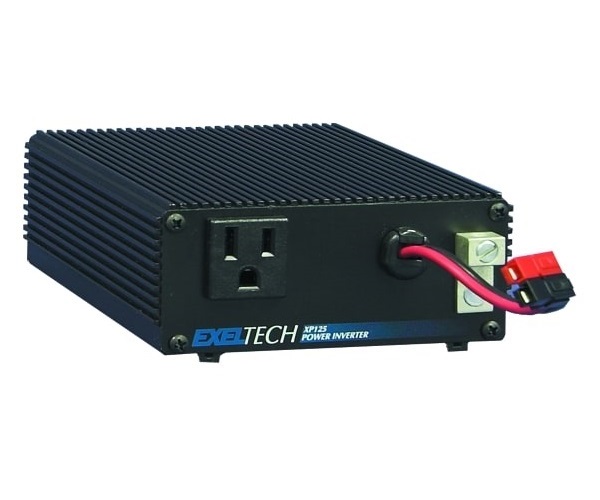2K watt power inverters convert direct current (DC) from sources like batteries or solar panels into alternating current (AC), which most household appliances use.
Due to their ability to handle a significant load, these inverters are popular for many homes and small businesses. Like any electronic device, 2 K-watt power inverters can experience failures.
However regular maintenance, helps avoid these 10 common causes of inverter failures and prolong its life.
10 Common Causes of 2K Watt Power Inverter Failure
Understanding these ten common causes of true sine wave inverter failure can help you troubleshoot and maintain optimal performance:
1. Faulty Power Switch
Faulty switches frequently cause inverters to malfunction. To troubleshoot them, unplug the inverter from its power source and plug another appliance into the switch.
If the appliance does not turn on, the switch is likely faulty and needs replacement.
2. Battery Issues
Battery-related problems are another frequent cause of inverter failure. These issues can include:
Loose Connections
Loose battery connections may prevent the inverter from receiving power. All that is needed is to tighten the connections to resolve this issue.
Corroded Terminals
Corrosion on battery terminals can impede the flow of electricity. The problem can be resolved by cleaning the terminals, using baking soda and hot water.
Discharged or Faulty Battery
A weak or dead battery will not provide sufficient power to the inverter. Recharging or replacing the battery might help.
3. Over- and Under-Voltage
Voltage fluctuations can also cause damage to the inverter.
Over-voltage can cause excessive heat and damage internal components, while under-voltage can prevent the inverter from operating correctly.
4. Capacitor Wear and Tear
Capacitors in true sine wave inverters are prone to wear and tear, especially under high temperatures. This can lead to inverter damage.
For instance, electrolytic capacitors have a limited lifespan and can fail, leading to inverter malfunction.
5. Overuse and Overload
Connecting too many high-power devices can overload your true sine wave inverters and cause them to shut down or fail. Ensuring the total load does not exceed the inverter’s capacity is crucial for its smooth functioning.
6. Ultrasonic Vibrations
Ultrasonic vibrations of inductive components can generate additional heat, leading to inverter failure. Ensuring proper maintenance and promptly addressing unusual noises can help mitigate this problem.
7. Ground Faults
Ground faults are another cause of inverter failure. They occur when an unintended connection between the electrical system and the ground causes the inverter to shut down to prevent possible damage.
8. Overheating
Overheating is another possible cause of inverter failure. It can occur due to poor ventilation, high ambient temperatures, or excessive load. Ensuring adequate ventilation and not exceeding the inverter’s load capacity can prevent overheating.
9. Internal Component Failure
The inverter internal components such as fuses, relays, and transformers can fail due to wear and tear or manufacturing defects.
10. Improper Installation
An improper installation, such as incorrect wiring or inadequate ventilation, can lead to true sine wave inverter failure.
3 Best Practices to Avoid Avoid 2K Watt Inverter Failures
Here are three best practices to avoid common failures in true sine wave inverters:
1. Proper Sizing and Installation
- Use appropriately sized battery cables and fuses to handle the inverter’s rated current. Undersized wires can overheat and cause fires.
- Follow the manufacturer’s installation guidelines carefully, ensuring proper ventilation and cooling for the inverter.
- Overheating is a major cause of failure. So do not exceed the inverter’s rated load capacity. Overloading can also lead to damage to internal components.
2. Battery Maintenance
Proper maintenance helps avoid 2k-watt inverter failure.
- Using high-quality batteries sized for your inverter’s requirements and replacing old/faulty batteries helps keep batteries maintained.
- Ensure battery terminal connections are always tight, and clean any corrosion to prevent loosening of connections.
- Remember to charge batteries regularly and do not let them drain completely.
3. Periodic Inverter Maintenance
- Clean cooling fans and air vents regularly to prevent the accumulation of dust and possible overheating.
- Check for any loose wiring connections, and tighten them as needed.
- Inspect for any component degradation like capacitor leakage or relay issues and replace faulty parts.
- Follow the recommended maintenance schedule for oil changes, air filter cleaning, etc., for inverters with engines.
Consult Exeltech if these troubleshooting steps do not resolve your 2 K-watt power inverter problems. Their team of professional technicians will ensure avoiding further damage.





